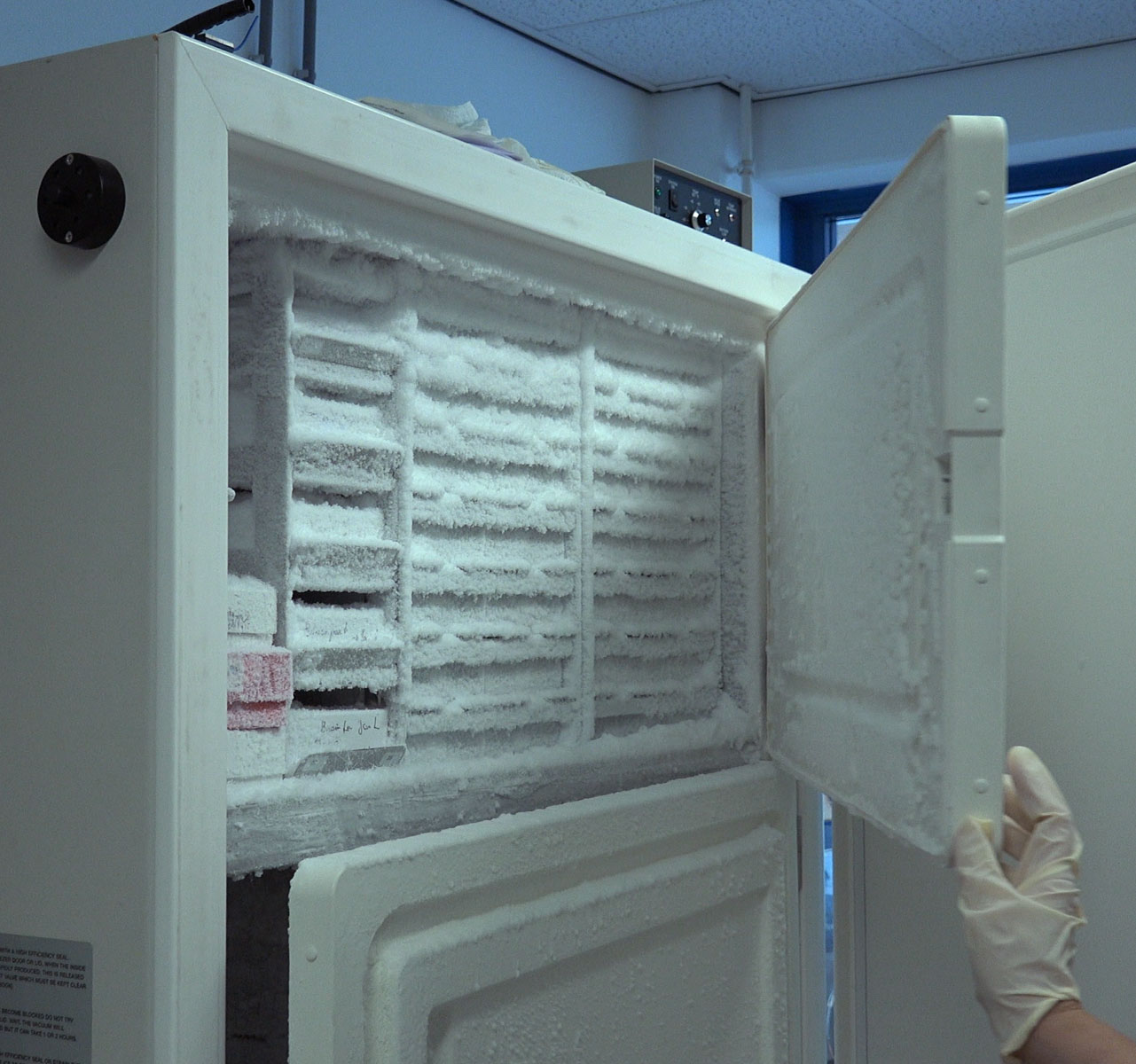Biobank: bank with priceless collection

BPRC's Biobank is Europe's largest repository of non-human primate tissue. Through the Biobank, we make our cells and tissues available to other researchers. It is a good example of international scientific research carried out in accordance with the highest ethical standards.
These are our freezers. They contain the treasures for researchers and other scientists from all over the world. These large units contain unique material that is of vital importance to researchers who carry out studies we cannot conduct ourselves.
In our freezers we store a wide range of biological materials, such as tissues, products derived from serum, blood, DNA, RNA and B cells. These materials are highly valuable to other research institutes, companies and organisations engaged in biomedical research. Researchers from all over the world are free to apply for certain materials, as long as they indicate what type of research they will need the materials for.
Rare and valuable primate specimens
In this way, BPRC makes rare and valuable primate specimens available to both BPRC employees and external scientists. Our Biobank may serve as an alternative source of information that will help people examine scientific hypotheses and pathomechanisms, and test new bioactive substances and biological products. The idea is to minimise the number of animals undergoing testing and to reduce research expenditures. We wish to emphasise here that our Biobank is NOT a commercial activity. We do not sell the cells and tissues we collect, but rather make them available to those who need them. We only expect to be reimbursed for the expenses we incur through storage and postage.
Biobank composition
Our Biobank is run by our veterinary pathologist, from where we literally mail our cells and tissues, several hundreds of times per year. Needless to say, we neatly categorise and label all our cells and tissues, and there are digital files on all the animals' backgrounds. This background information is essential, and is in fact what makes our Biobank unique – because our animals are born here and spend their entire lives here, we know everything there is to know about them. The veterinary pathologist decides what cells and tissues are suited to being stored in our Biobank and for what purposes.
Research groups
BPRC not only disseminates cells and tissues from its Biobank, but also shares them directly through various research groups. As is customary in the academic community, these research groups will make their data available for other purposes once they have been published in academic journals.
Visible results
Through its Biobank, BPRC indirectly contributes to several types of research. The cells and tissues we store are used in many studies. For instance, through our Biobank, we were involved in the characterisation of types of bacteria found in stomachs, and the oesophagi are used for diagnostic purposes.
Furthermore, we have helped (and still continue to help) others conduct many studies on the development of brains and brain functions – studies that are not always carried out at BPRC, but to which we do contribute through the cells and tissues we provide. The same is true for the use of our blood products, which are used by researchers investigating the cross-reactivity of certain medications, or the effects of certain medications on certain blood components. These researchers want to test these medications in a Petri dish before actually performing any experiments involving animals.
Significant contribution to science
The Biobank is physical evidence that all animals living at BPRC help advance the cause of science, even after they die, and even if they were never experimental animals in the first place. Because the cells and tissues we harvest after they die can still be used after their death. Which encourages us and others to conduct research that does NOT involve living animals!

